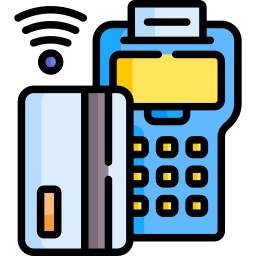
Card Reader – External & Peripheral Hardware
A card reader is an external peripheral hardware device that allows computers or other digital systems to access data stored on memory cards. These devices are widely used for reading and writing data to various types of flash memory cards, such as SD (Secure Digital), microSD, CompactFlash (CF), Memory Stick (MS), and others. Card readers serve as an essential tool for transferring data between memory cards and computers, especially in environments involving photography, videography, mobile devices, and security systems.
Key Features and Characteristics of a Card Reader:
Provides an interface between a memory card and a computer or other host device
Supports various memory card formats depending on the model and design
Connects externally to a computer via USB, USB-C, or sometimes via a built-in reader in laptops or desktops
Plug-and-play functionality allows for quick access to files without needing additional drivers in most cases
May include multiple slots to read different types of cards simultaneously
Often compact and lightweight, making it suitable for portable and travel use
Offers high-speed data transfer rates, especially when using USB 3.0 or USB-C interfaces
Compatible with multiple operating systems including Windows, macOS, and Linux
Common Applications of Card Readers:
Used to transfer photos, videos, and files from digital cameras and camcorders to computers for editing or storage
Essential for professional photographers and videographers to access large media files quickly and efficiently
Helpful for mobile users who store data on microSD cards and want to manage files on a PC
Used in security systems to access data from surveillance cameras or card-based access logs
Employed in point-of-sale (POS) systems to read customer loyalty or access cards
Facilitates the recovery of lost or corrupted data from memory cards using data recovery software
Convenient in educational and office settings for transferring documents and multimedia content
Supports firmware updates for devices via files stored on memory cards
Used in 3D printing and industrial machines that load designs from SD cards
Frequently used by content creators for quickly moving media from camera to editing software
Cost and Accessibility:
Card readers are generally low-cost devices and are easily available in electronics stores or online
Basic single-format card readers are very affordable and suitable for casual users
Multi-format card readers that support a wider range of card types are moderately priced
Some high-end card readers offer faster transfer speeds and support for UHS-II or CFexpress cards, which are more expensive
No subscription or additional service fees are required for using a card reader; it is a one-time hardware purchase
Some devices such as laptops and all-in-one PCs come with built-in card readers, which means no separate cost is needed
Comparison with Other Data Transfer Methods:
Compared to using direct USB connections from cameras or mobile devices, card readers often provide faster and more stable transfer speeds
Unlike cloud storage, card readers do not require an internet connection and ensure complete data privacy during file transfers
Compared to wireless file transfer solutions, card readers are more reliable for large files and high-volume data
They are more versatile than dedicated device-to-device cables, as they can read multiple card formats from various devices
While built-in readers offer convenience, external card readers are typically faster, more reliable, and support more formats
Conclusion:
A card reader is a compact yet highly useful peripheral hardware device that simplifies the process of transferring and accessing data stored on memory cards. Its versatility, ease of use, and wide compatibility make it an essential tool in many fields, from professional photography and videography to education, business, and security. While basic models are affordable and sufficient for general tasks, advanced models offer greater speed and broader compatibility for professional use. The card reader operates without ongoing costs, making it a cost-effective solution for managing digital media. As the reliance on memory cards continues to grow across various devices, card readers remain an indispensable part of modern digital workflows.












